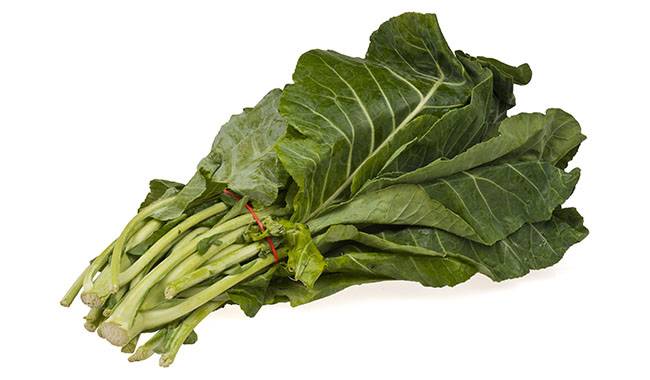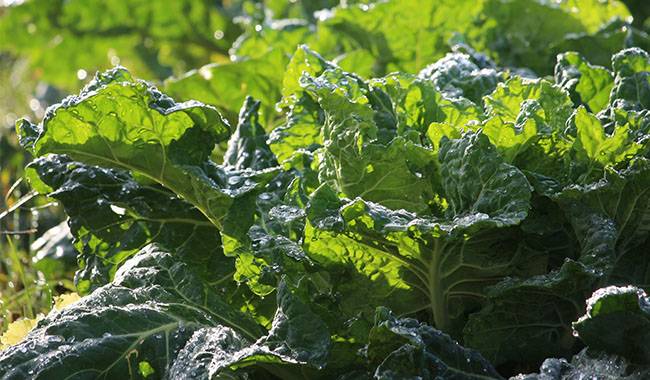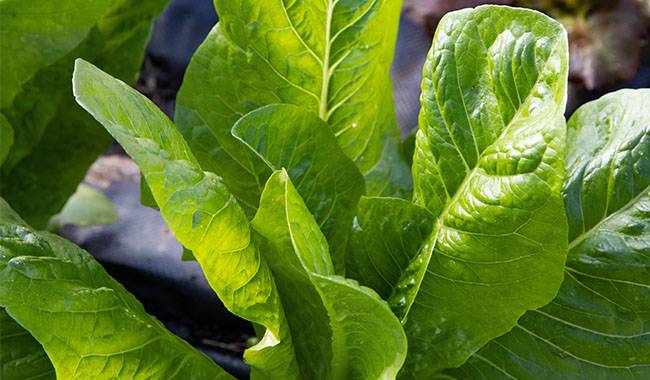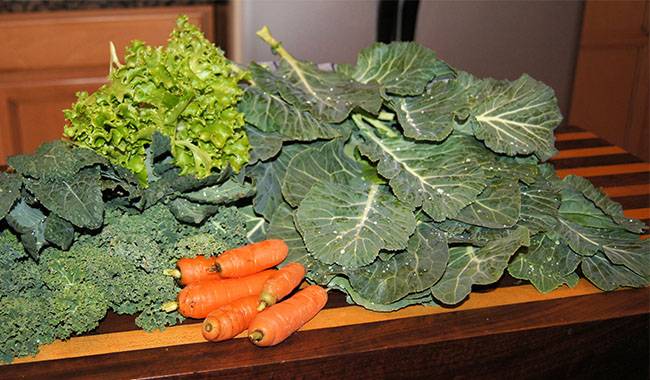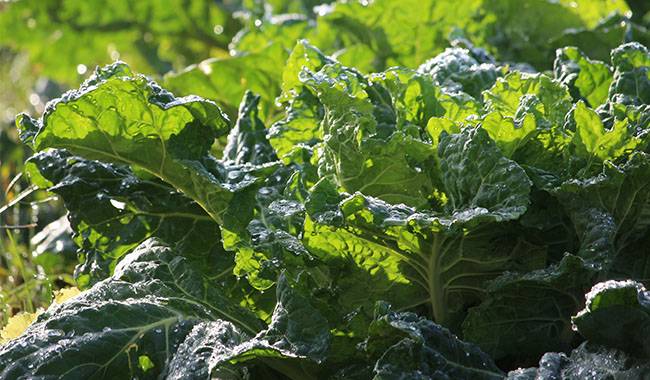
Collard greens (Brassica oleracea var. acephala DC.) is a brassica plant of the cruciferous family. It is a biennial foliage herb flower and a horticultural variety of cabbage.
The basal leaves are close to each other in a rosette shape. The leaves are divided into light leaves, wrinkled leaves, split leaves, and wavy leaves. The veins and petioles are light purples. The inner leaves are extremely rich in color, including yellow, white, pink, red, and rose red. , Fuchsia, Cyan, Mottled, etc.
The viewing period of the leaves is from December to March and April of the following year. The plant height is generally 20-40 cm, racemes, and the flowers are light yellow. The fruit is a silique, the seeds mature in June, and the seeds are dark brown and oblate.
The shape of the leaves is beautiful and varied, the color of the heart leaves is as gorgeous as a flower, and the whole plant resembles a blooming peony, which people vividly call it “peony”. Because of its preference for cold weather, it is more resistant to cold and can endure many short touches of frost. In winter and early spring when flowers are withered, it is a rare and excellent material for arranging open flower beds, flower stands, and potted plants.
Morphological characteristics of Collard greens
Collard greens are a biennial foliage herbaceous flower, which is a horticultural variety of cabbage.
The basal leaves are densely intergrowth in a rosette shape. The leaves are divided into light leaves, wrinkled leaves, split leaves, and wavy leaves. The outer leaves are relatively large. The leaves are emerald green, yellow-green or blue-green. The petioles are strong and winged. The veins and petioles are shallow. purple.
The inner leaves are extremely rich in color, including yellow, white, pink, red, rose red, purple, blue-gray, variegated, etc., which are very beautiful.
The viewing period of the leaves is from December to March and April of the following year. The plant height is generally 20-40 cm, bolted and bloomed under warm and long-day conditions in April, with racemes and light yellow flowers. The fruit is a silique.
The seeds mature in June. The seeds are dark brown and oblate. There are about 300 seeds per 1 gram of seeds. When the seeds are not collected, the stalks should be cut off in time to extend the viewing period of the leaves.
The cultivation environment of Collard greens
1. Temperature
Prefers cold, mild climate, strong cold resistance, after refining the seedlings can withstand the low temperature of -12℃ for a short time, adult plants can withstand 15-20 short-term touches of frost without wilting in winter open field cultivation in northern my country, but they cannot tolerate continuous long-term Bitter cold.
Seed plants need more than 30 days to pass through vernalization and bolting at 2-10°C. The optimum temperature for seed germination is 18-25℃, and the optimum temperature for plant growth is 20-25℃. It can grow at a high temperature of 35°C, but the harvested leaves have poor flavor, more fiber, and hard leaves.
2. Illumination
It is more shade-tolerant, but leaves grow fast and have good quality under sufficient light. The planting plants should be bolted and bloomed in a long day.
3. Moisture
The water demand is large. In drought and water shortage, the leaves grow slowly, but they are not tolerant of waterlogging.
4. Soil
It has strong adaptability to the soil, and it is the most suitable loam or clay loam with rich humus and fertile.
It grows quickly, with high yield and good quality in a cold climate with sufficient fertilizer and water. In the cultivation, it is necessary to frequently apply thin fertilizer, especially nitrogen fertilizer, and apply a small amount of calcium fertilizer, which is beneficial to the growth and improve quality.
The pH value grows most vigorously in soil with pH 5.5~6.8.
The nutritional value of Collard greens
The nutritional value of Collard greens
Compared with most vegetables, the biggest advantage of Collard greens is comprehensive nutrition.
In its seemingly fragile body, it is rich in vitamin C, vitamin A, vitamin K, folic acid, and minerals such as calcium, iron, phosphorus, magnesium, and manganese.
Each 100g of Collard greens contains 120mg of vitamin C, which is 43mg more than the same weight of lemon.
Eat 50g (almost one piece) of Collard greens a day, and you can get the vitamin C you need every day. Supplementing vitamin C can prevent oxidation and enhance immunity.
At the same time, every 100g of Collard greens contains very high vitamin A, which is basically the same as the amount of vitamin A contained in the same weight of carrots. Vitamin A supplementation helps protect eyesight, reduce skin darkening, and prevent skin aging.
In addition, the vitamin K content in Collard greens is also quite amazing.
The vitamin K contained in every 100g of Collard greens is 10 times the daily requirement. Vitamin K can promote calcium absorption, reduce vascular calcification, and prevent atherosclerosis.
| Collard greens | Spinach | Arugula | Romaine lettuce | Cabbage | |
| Vitamin A | 308% | 188% | 47% | 174% | 10% |
| Vitamin B | 200% | 47% | 25% | 40% | 5% |
| Vitamin K | 1021% | 604% | 137% | 128% | 30% |
| Calcium | 14% | 10% | 16% | 3% | 2% |
| Iron | 9% | 15% | 8% | 5% | 2% |
| Potassium | 13% | 16% | 11% | 7% | 4% |
In addition, Collard greens also contain a large number of beta-carotene, flavonoids, polyphenols, and many other natural antioxidants, which can play a role in cardiovascular protection, anti-inflammatory, and anti-cancer.
After looking at the vitamin content and antioxidant capacity, next look at the minerals.
Collard greens contain 1.15mg of iron per 100g of cooked Collard greens, which is even a little more than the iron content of the same weight of beef (without considering the absorption rate), so Collard greens can improve anemia to some extent.
In addition to containing a large number of vitamins and minerals, Collard greens also have high dietary fiber content, with 4.1g of dietary fiber per 100g of Collard greens, which is equivalent to the fiber content of 2 oranges.
Benefits of Collard greens
What really makes Collard greens shine in the past 10 years is that Collard greens contain indole-3-methanol and sulforaphane. These two substances can inhibit the proliferation of cancer cells.
In 2010, a study by Michigan State University pointed out:
Sulforaphane can effectively inhibit the growth of cancer cells, especially breast cancer-Sulforaphane can effectively reduce 65%-80% of breast cancer cells.
In addition, the top international scientific journal “Science” also published a study from “Harvard University”. In this study, researchers found indole-3-carbinol as a tumor suppressor pathway.
In previous studies, researchers found that the human body contains a protein called PTEN, which is a tumor suppressor.
But in most cases, PTEN is inhibited by a substance called WWP1 (Ubiquitin E3 Ligase), which makes PTEN unable to exert its anti-cancer and anti-cancer functions.
If you want to activate PTEN, you need to prevent WWP1 from working. The indole-3-carbinol rich in Collard greens have the ability to inhibit WWP1 and can reactivate PTEN.
Therefore, eating Collard greens often can also have anti-cancer and anti-cancer effects.
Collard greens are a kind of nutrient-rich superfood. It contains more vitamin A, vitamin C, vitamin K, and other nutrients than other vegetables, as well as anti-cancer ingredients indole-3-methanol and sulforaphane.
But I still want to remind everyone that the diet should be as diverse as possible, and don’t refuse other foods just because Collard greens are rich in nutrition!




